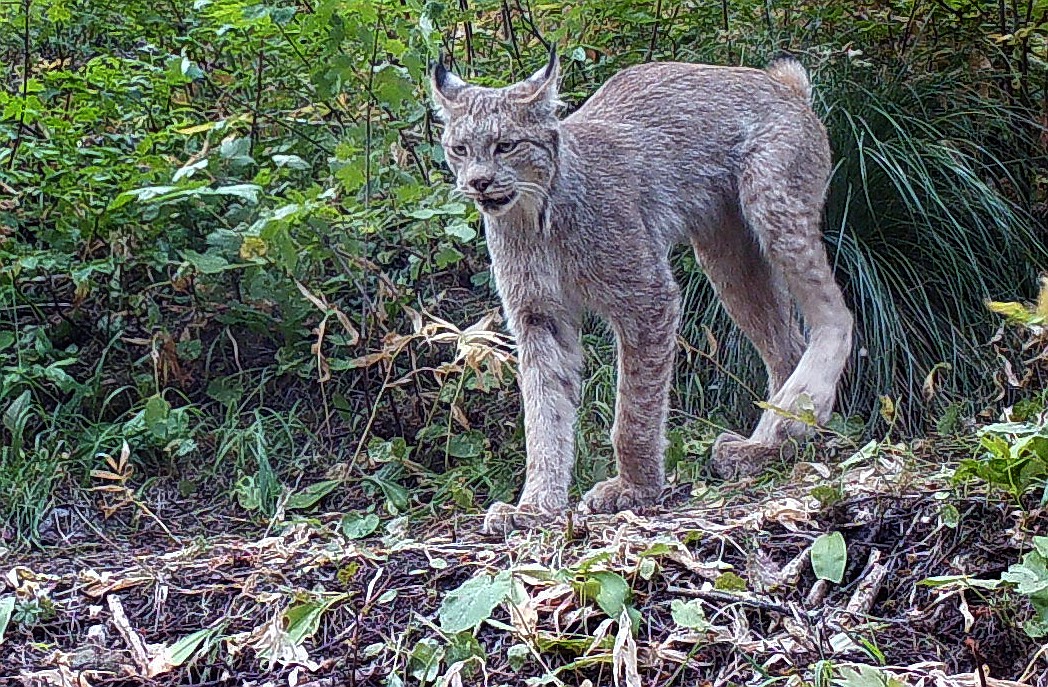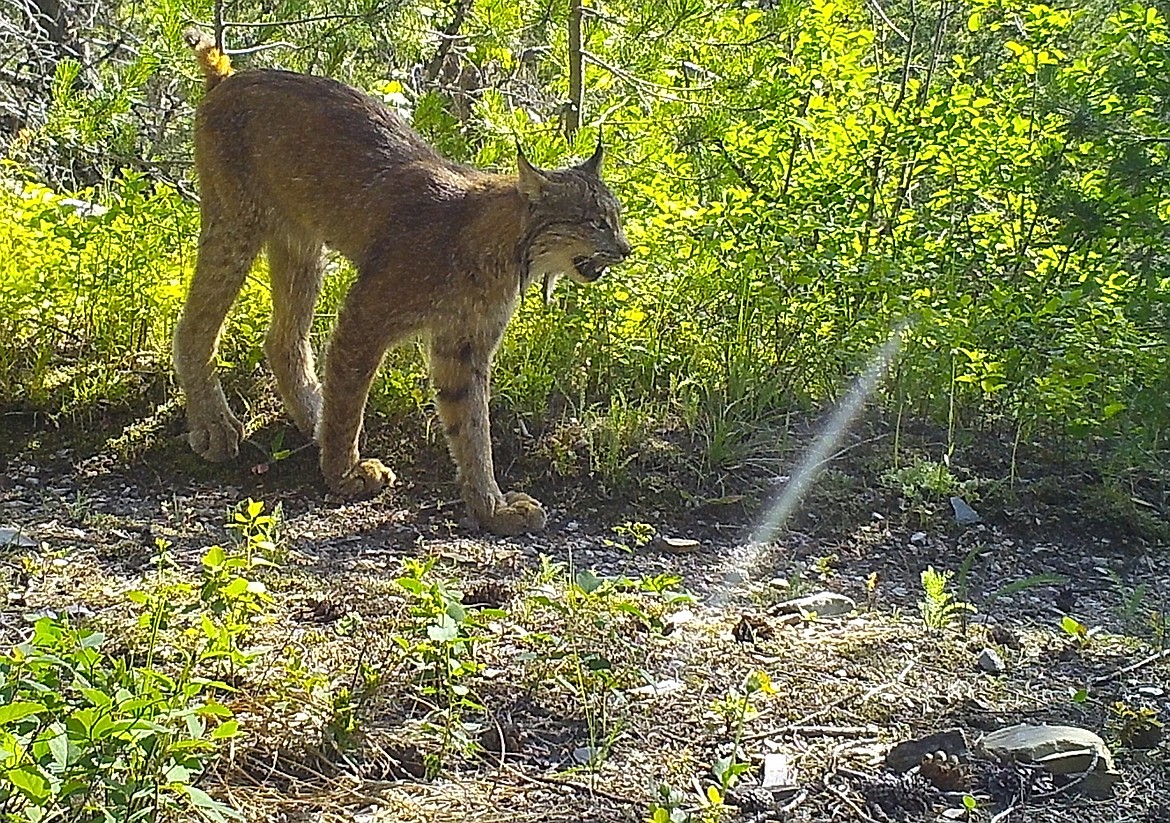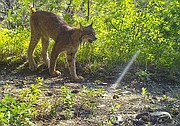Recent study aims to estimate lynx population in Glacier Park
Like fur-covered ghosts they silently stalk the forests of Glacier National Park.
Little is known about the population of Canada Lynx — rarely glimpsed by visitors — that make the Crown of the Continent their home, but a recently completed three-year scientific study is hoping to change that.
The first-ever comprehensive lynx population survey in the park, funded by the Glacier National Park Conservancy and conducted in collaboration with Alissa Anderson, John Waller and Dr. Dan Thornton, hopes to finally shed light on mysterious feline’s population densities and preferred habitat inside Glacier National Park.
“It seems like there are lynx in many different parts of Glacier, which we are excited about, but we still don’t know what kind of habitat they really prefer,” said Anderson, a graduate student and researcher at Dr. Dan Thornton's Mammal Spatial Ecology and Conservation Lab at Washington State University. “Hopefully, this study will help us understand why lynx choose to live in certain parts of the park but not in others.”
With the backing of $255,000 in funding raised by the Conservancy, the researchers were able to get to work in 2019.
“When they came to us with the proposal for this project, we told them we were all in. That meant a significant investment was needed from our donors and we were able to secure that funding,” Conservancy Executive Director Doug Mitchell said. “It was an incredible team effort that took many hundreds of individual donors as well as some rather large donors who came in to help out. ”
USING A network of trail cameras scattered across 308 locations along hiking trails within the park, the study was able to capture numerous images of lynx, as well as a variety of other wildlife, over the past three years. Now, researchers must determine what data can be extrapolated from the more than 1 million photos captured during the study in areas such as Kintla, Lake McDonald, Loop, Cut Bank, Two Medicine, Belly River, Many Glacier and St. Mary and others.
While the vast majority of photos captured are useless images triggered by the motion of trees and other plants, roughly one-third of the camera locations were able to record the presence of at least one lynx.
“We surveyed the most remote, backcountry parts of the park as well as the more popular frontcountry areas,” Anderson said. “The critters like to use the trails just as much as the humans do. So, putting the cameras on the trails made sense. That way, we didn’t have to use any lures, which could have been dangerous. Trail cameras provide a nice, passive way to gather data without having to trap any animals or anything like that, and it worked perfectly.”
The timing of the study also enabled researchers to gather data in several areas of the park that were off limits to visitors during the Covid-19 pandemic in 2020.
“The shutdown provided us with a rare experimental opportunity for us to see the difference in behavior during a normal year and one with little or no visitation. We are still analyzing the data, but it will be interesting to see if there were more animals moving during that year and if they were more active in the day than they normally had been in the past,” Anderson explained. “It was an amazing opportunity for us. It’s not like you can usually just shut down half a national park just to learn about wildlife behavior.”
THE DATA collected during the 2020 recreation closures on the east side of the park showed increased activity for most wildlife species, including lynx, which went from 114 to 404 detections. The first-ever raccoons in the park were also detected in the North Fork and Lake McDonald, while porcupine detections increased by 16% across the park.
“Porcupines have mysteriously disappeared from forested, mountainous regions over the past few decades. Hopefully, the unexpected number of porcupines we captured photos of during this study is evidence that the population is beginning to rebound from whatever was affecting it,” Anderson said. “It just shows that, while you may be conducting a study to learn about one species, that doesn’t mean you can’t gather important data about another.”
With the data collection period completed, the researchers are now hard at work attempting to identify individual lynx captured in the images as they pursue population density estimates. While little is known about the overall population of lynx in the United States, which were listed as threatened under the Endangered Species Act in 2000, the study may be able to help researchers understand how many individual lynx can be found in certain areas of the park.
“Overall population numbers would be the golden data for us. It’s what everyone wants to know. Unfortunately, it is very difficult data to determine,” Anderson explained. “We are working with some techniques that can identify individual lynx using the unique spots found on the inside of their front legs and that data will help us figure out a population estimate and help track how the animals are moving through the park.”
AS ANDERSON and her fellow researchers continue to comb through the data, they hope to have a final report of their findings available by the spring of next year.
With the conclusion of the extensive multi-year project, Mitchell hopes the study’s success will help lead to future research inside the park, such as the planned wolverine study slated for 2022.
“It’s my hope that the success of this study begets ideas for future studies and helps the park become a living laboratory for this kind of research,” he said. “The kind of research that can provide science-based, actionable, decision-driving information for leaders.”
Reporter Jeremy Weber may be reached at 406-758-4446 or jweber@dailyinterlake.com.



